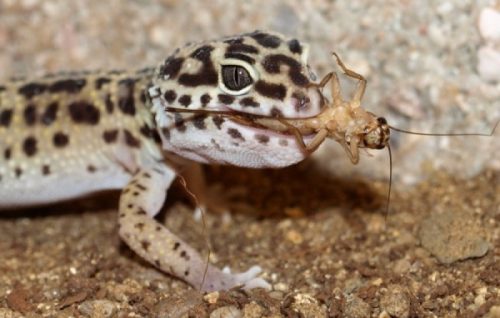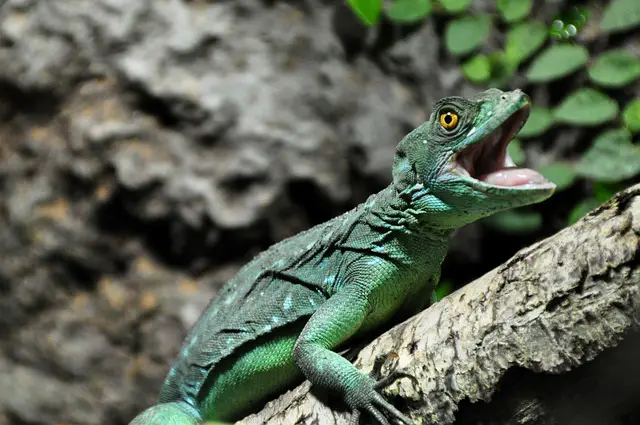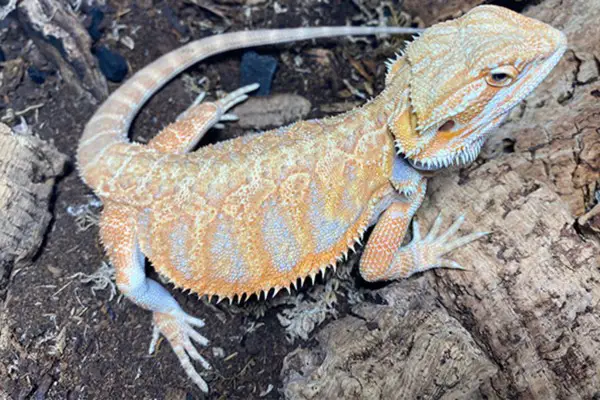The leopard gecko (Eublepharis macularius) is a lizard that is found in the dry habitats of Asia. It also makes a very good pet. The unique feature of leopard gecko is that they are able to move their eyelids—a rare feature among other geckos.
Leopard Gecko Facts
Anatomy
- The adult geckos reach a length of about 20.5 to 27.5 cm (8.1 to 11 inches) while hatchlings are 6.5 to 8.4 cm (2.6 to 3.3 inches).
- They weigh up to 45 – 65 grams but hatchlings average 3 grams in weight.
- Wild leopard geckos are slightly different from those raised in captivity. In the wild they have dark dull physical appearance while the captive lizards show many different skin colors or no color at all, like an albino leopard gecko that can only be found in captivity.
- They have a rough & tough skin for it is perfectly adaptable to move on rocky hills terrain in a dry environment.
- Leopard geckos also shed their skin before that they will change skin color.
- Geckos are thought to eat its skin after shedding. Moments later, it comes up with entirely new brightly colored skin.
- They are known to replace 100 teeth every 90 – 120 days.
- Predators of leopard geckos include large reptiles, snakes, and foxes.

Distribution
- Leopard geckos occur in dry deserts including rocky dry grasslands. They are found in the north-west India, Iran, Turkey, Pakistan, and south-Asian Afghanistan.
- During winter the temperature drops down to 10o C thus geckos go underground to consume only fat reserves. This is semi-hibernation state. They will only come out when the temperature is favorable.
Behavior
- Leopard gecko sleeps all day long in a shade to gain energy and absorb warm sunlight. At night it must come out to forage.
- They have a strong night vision and geckos never blink.
- They have quite short legs which is why leopard geckos are extremely quick while moving on land. Not only this they are also able to climb twigs and rocks.
- They possess acute hearing sense and as such gecko relies on its ears to hunt. Thanks to the hearing sense, geckos can escape from predators just in time.
- Leopard geckos have got the ability to camouflage themselves. During daytime they remain under burrows which keep them safe from being eaten.
- If the predator attacks the gecko from its tail the gecko detaches the tail and escapes.
- Male geckos are highly aggressive especially during the courtship. When they confront each other, one of the males will extend its limbs, while raising itself from the ground to show aggression.
- Leopard geckos are typically solitary creatures.
Feeding Ecology & Diet
- Leopard geckos are most likely to feed on many ground-dwelling insects such as grasshoppers, waxworms, crickets, super worms, roaches, mealworms, and earthworms.
- The captive geckos will less likely to eat dead animals rather they prefer to hunt themselves. However in captivity they would love to have crickets in their diet.
- You can feed captive geckos many insects such as spiders, ants, and moths.
Reproductive Biology
- Summer is the breeding season for leopard geckos. The female produces 2 – 3 clutches on average but can go up to 6 – 8 clutches if the food is abundant. A single clutch contains 2 eggs.
- The female geckos lay eggs 3 – 4 weeks after mating. Once the eggs are hatched hatchlings will shed their skin within one day.
- The average lifespan of leopard geckos is 25 years in captivity.









leopard geckos are one of the cutest animals ever